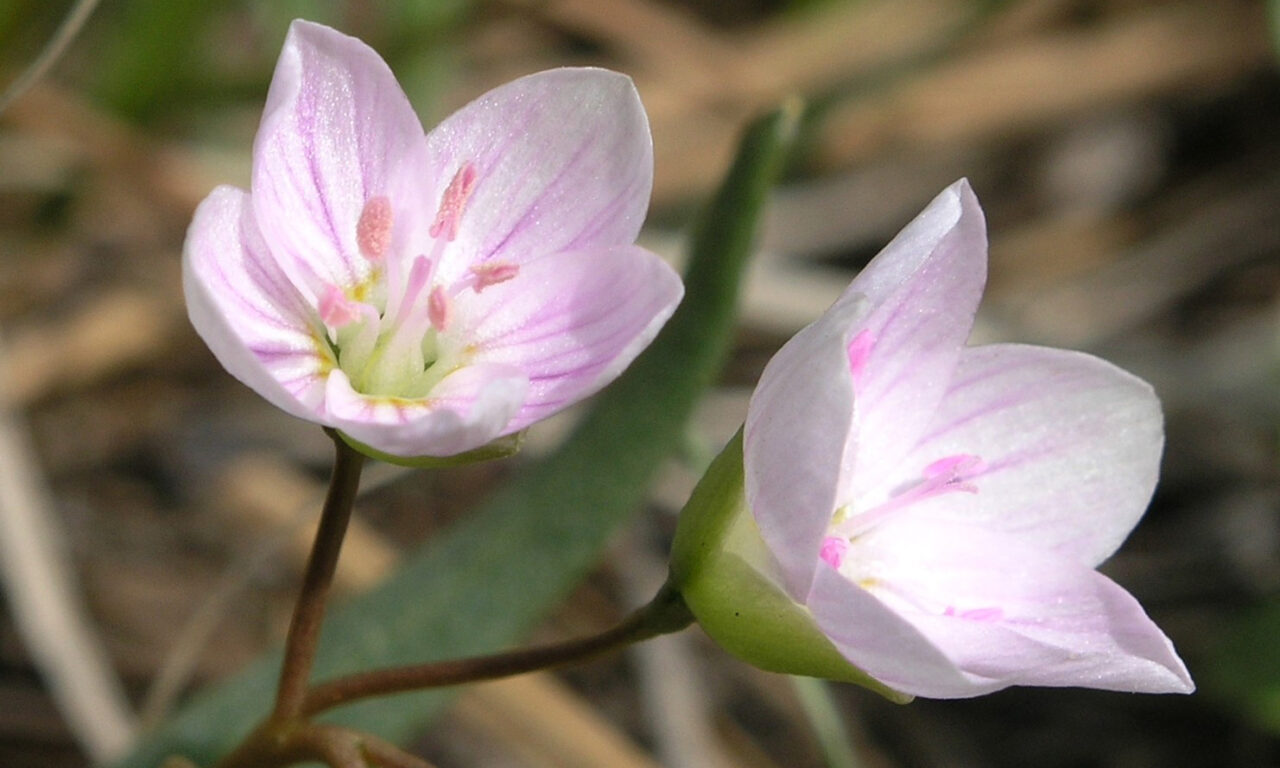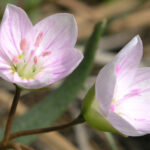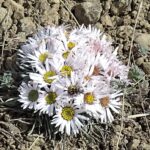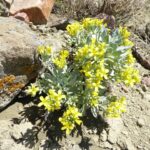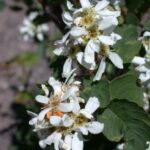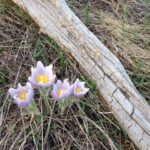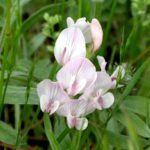Although bears do it, bats do it, and even people might occasionally wish to do it (hibernate), spring will eventually come, animals will awaken, as will wildflowers.
Spring technically starts on the vernal equinox (March 20, 2023), but in most years that’s late enough to miss some of the loveliest wildflowers. Start looking as soon as wintery sun and snow-melt moisture encourage the first perennial plants to sprout from their well-established roots. The earliest blooms may appear as soon as January.
Finding First Spring Flowers
One of the best places to look for first spring flowers is on the surface shale beds along the base of the foothills. The well-draining, sun-warmed dark substrate suits these “early birds” of the plant kingdom. Sheltered woodland trails are also worth a look. Here’s what might you expect to find.
Low Easter Daisy doesn’t wait for Easter to appear! This flat-to-the-ground, cushion plant has a rosette of greyish leaves and bright white to pink-tinged daisy-like flowers. Look carefully and you’ll see white, strap-like petals surrounding a mass of minute yellow disc flowers. The whole head contains many individual florets—typical of the sunflower family. That makes them a good destination for insects to visit with their flat landing platform and ample clustered food (pollen) rewards! And so, the plants get pollinated.
Front Range Twinpod (Bell’s Twinpod) is an endemic plant (it has a single, defined, geographical location), found in Boulder and Larimer counties. It is locally abundant on shale mesas, hogbacks, and road cuts. Vivid yellow blossoms of this mustard family plant sprout from a grey-green rosette. When in fruit, the two pods produced by each flower nestle together—hence the name. The characteristic round shape of the plant sitting on otherwise bare earth, let alone the bright circles of yellow blooms, make it recognizable from Highway 36 between Boulder and Lyons even at highway speeds. But please park and take a closer look!
Foothills—or three-fingered Milkvetch is another ground-hugging plant of rocky outcrops and shales that blooms early in spring. Typical of the pea family, it has tiny, lavender pea-flowers with interesting dark lines that might possibly be guides for insects seeking to find nectar? When not blooming, this grey-green spreading plant merges into the rock substrate and is easy to miss—a hands-and-knees plant.
Western Serviceberry is a shrub, small tree, or a mere mini-twig on shale soils. In the rose family, it has attractive white petals followed by berries that ripen to dull purple. They are edible, but besides the fact that collecting them is not allowed on county lands, it is prudent to never eat wild berries unless you are confident in your identification skills!
Spring Beauty deserves its name, with its delicate white to pink flowers on frail stems that barely top the grass growing in patchy sunlight beneath pines. Its leaves are long, skinny, and fleshy. Underground, the plant stores enough nutrients in its gumball-shaped tubers to fuel its early spring growth. Older field guides place this plant in the purslane family; newer guides say it’s in the miner’s lettuce family. Regardless, the common name is apt and memorable, and finding this elegant flower is a true trail delight.
Pasqueflowers, in the Buttercup Family, vary in color from nearly white, to palest blue, to lilac. (The colored parts are sepals, and the flower has no petals—on many flowers the green sepals behind the petals enclose the bud.) The bell-shaped flowers push up from the ground as the snows melt and gradually straighten and open. The whole plant is silky-hairy and the upright bell on each flower stalk is surrounded by a “nest” of leaflike, fuzzy bracts. When the flower is over, the seed heads resemble a silvery head of wild hair—picture a photo of Albert Einstein!
These are just a few of the wildflowers to look for in early spring. Besides the thrill of finding them, the biggest benefit is they entice their fans to get out on the trail!


